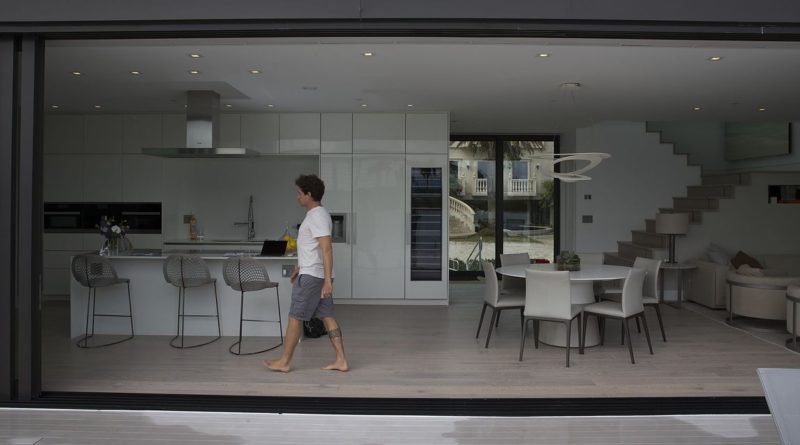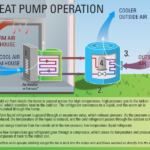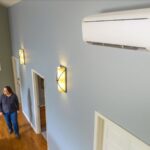Check out these generous tax credits for energy- saving at home — and there are no income limits – MarketWatch
Energy Disrupter

The federal income tax rules are constantly changing. Tax breaks come and go, and are sometimes extended beyond their original sell-by date. Here’s updated information on tax-saving credits for installing energy-efficient equipment for your home. As you will see, the credits can pay for a significant fraction of the cost.
Residential solar energy credit
You can still claim a federal income-tax credit for expenditures to buy and install qualifying energy-saving solar equipment for your home. Since this gear is expensive, it can generate big credits, and there are no income limits. Even billionaires are eligible.
For 2019, the credit rate was 30%. For 2020 through 2022, the rate drops to 26% and then to 22% for 2023. After that, the credit is scheduled to expire.
The credit can be used to reduce your regular federal income tax bill and the alternative minimum tax (AMT) if you owe it.
Qualified expenditures include costs for site preparation, assembly, installation, piping, and wiring for the following:
Qualified solar electricity generating equipment for your U.S. residence, including a vacation home. You must use the residence yourself. So, you cannot claim the credit for a property that is used exclusively as a rental.
Qualified solar water heating equipment for your U.S. residence, including a vacation home. To qualify for the credit, at least 50% of the energy used to heat water for the property must be generated by the solar water heating equipment. The credit cannot be claimed for a property that is used only as a rental. No credit is allowed for solar water heating equipment unless it is certified for performance by the nonprofit Solar Rating Certification Corporation or a comparable entity endorsed by the state in which your residence is located. Keep the certification with your tax records.
More residential energy credits
You can also still claim tax credits for expenditures to buy and install some other types of energy-saving equipment for your home. For 2019, the credit rate for this was 30%. For 2020 through 2022, the rate drops to 26% and then to 22% for 2023. After that, the credits are scheduled to expire. The credits can be used to reduce your regular federal income tax bill and the AMT. Claim credits for the following expenditures:
Qualified wind energy equipment for a U.S. residence, including a vacation home.
Qualified geothermal heat pump equipment for a U.S. residence, including a vacation home.
Qualified fuel cell electricity generating equipment for your U.S. principal residence. The maximum credit is limited to $500 for each half kilowatt of fuel cell capacity.
How to claim the credits
You can only claim these credits for expenditures on a “home,” which can include a house, condo, co-op apartment, houseboat, mobile home, or a manufactured home that conforms to federal manufactured home construction and safety standards.
Keep proof of how much you spend on qualifying equipment, including any extra amounts for site preparation, assembly, and installation. Also, keep records to show when installations are completed, because you can only claim the credit for the year when that happens.
Claim these credits by including Form 5695 (Residential Energy Credits) with your Form 1040.
State and local incentives may also be available
You might also be eligible for state and local tax benefits, subsidized state and local financing deals, and utility company rebates.
$500 credit for less-ambitious energy-saving
A much more modest residential energy credit covers qualifying equipment installations completed through the end of this year. This break allows you to claim a federal income-tax credit of up to $500 for installing energy-saving improvements to your principal residence.
However, you must reduce the $500 limit reduced by any credit amounts claimed in earlier years. In effect, the $500 amount is a lifetime limit, and you may have already used it up.
If not, the credit can cover qualified expenditures for advanced main-air circulating fans; natural gas, propane, and oil furnaces and hot water boilers; electric heat pumps; electric heat pump water heaters; biomass fuel stoves; high-efficiency central air conditioners; natural gas, propane, and oil water heaters; energy-efficient windows, skylights, and doors; energy-efficient roofing products; and energy-efficient insulation.
Claim this credit by including IRS Form 5695 (Residential Energy Credits) with your Form 1040.
Also see: Why buying a condo for your college kid could be a smart financial move
Original Source: https://www.marketwatch.com/story/check-out-these-generous-tax-credits-for-energy-saving-equipment-at-home-and-there-are-no-income-limits-11627919370















